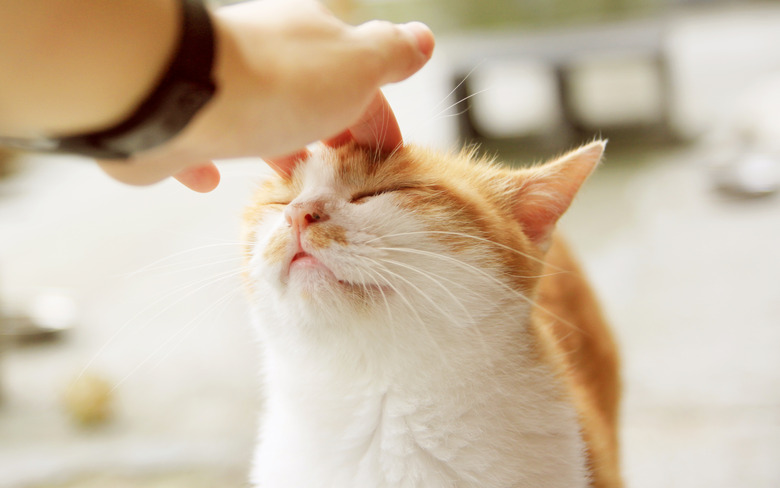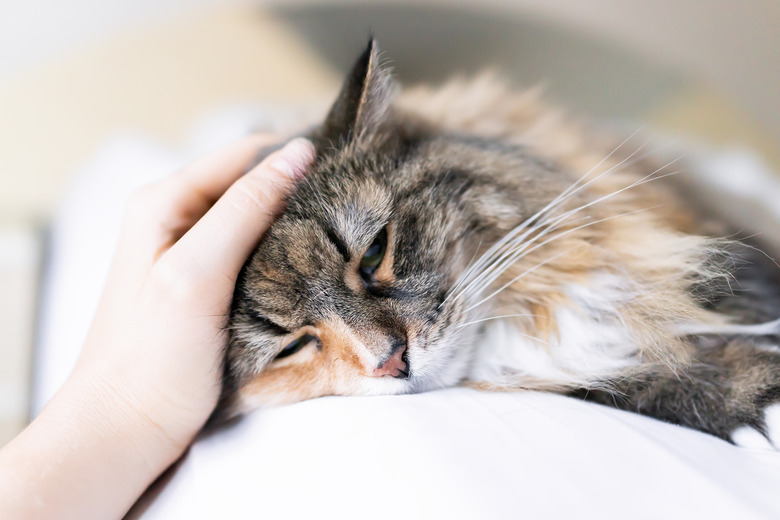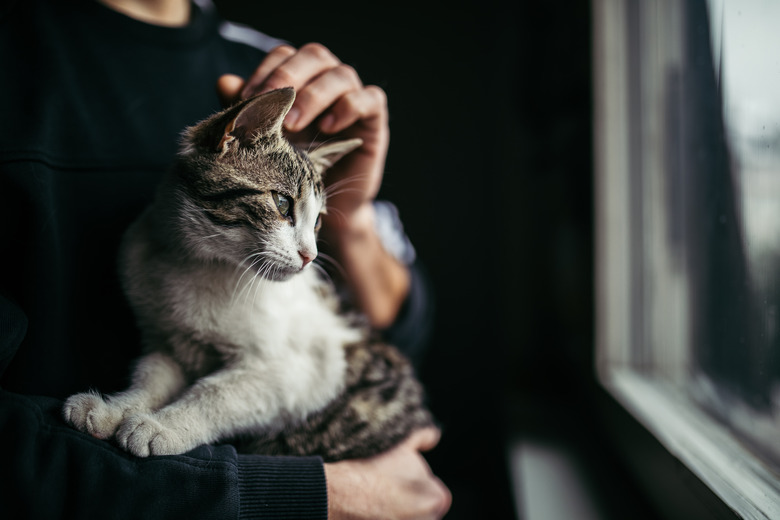Why Do Cats Like Being Pet On Their Heads?
A furry feline friend loves a lot of things, including lots of catnip and naps, constant attention and plenty of petting. One place you've probably noticed your cat especially loves to be pet is the top of their head.
When you pet your cat's head, they might start to purr or perhaps cuddle into you a little closer. Maybe if your hand is hanging down, your cat will instinctively walk under it, hoping for you to pet their head. If you've ever stopped and wondered why your cat likes its head to be pet, here are a few key reasons.
They can’t reach that area
They can't reach that area
A cat can lick herself and groom certain parts of its body by herself. However, they can't reach their own head. It's impossible for a cat to lick their own head, and it's tough for them to scratch up there. So when you offer your hand, you can bet your cat is going to appreciate it.
It’s comforting to the kitty
It's comforting to the kitty
When your cat was just a wee kitten, her mother used to lick her forehead, which was a sign of caring and comfort. If you do the same, you're bringing back good memories from the beginning of your cat's life. It's also comforting because a cat will lick herself for grooming purposes, but since she can't reach up there, you're providing it with the grooming she wants and needs.
Scent glands are there
Scent glands are there
Cats like to be pet where they have concentrated scent glands. If you notice, you'll see them rubbing these certain areas against your furniture or your hand, because it feels good. The places around the head where the scent glands are located are the base of the ears and chin and the cheeks. For instance, you should pet between the ears and behind the whiskers on their cheeks. When you rub those areas, your kitty will feel endeared towards you. If she is rubbing her head against you, it's a sign of love and comes out of the desire to spread her scent.
The best ways to pet your cat
The best ways to pet your cat
Whenever you pet your cat—whether it's on the head or somewhere else on the body—make sure you do so gently. Cats may have big personalities, but at the end of the day, they are also sensitive creatures.
If you notice your cat getting irritated when you pet her, you may want to avoid that area and/or see a vet, since something else could be going on. For example, many cats don't like to have their bellies or their actual ears rubbed, like dogs and other animals might.
When petting your cat, make sure you let her take the lead. You don't want to run up behind her and start petting her. Instead, allow your cat to sniff your index finger and then touch her nose against the finger. If she's in the mood to cuddle up with you, your cat will push her face against your hand, and then show you where she wants to be pet.
Go slowly and look for signs that your cat likes what you are doing. Signs that show she does not like what you are doing include ears flattening against the head, fidgeting, growling, hissing and tail twitching. Make sure you always ask your vet more about where is best to pet your cat.
Conclusion
Conclusion
Cats like to be pet on their heads because it feels comforting, they can't reach that spot themselves, and they have scent glands there. When petting your cat, always pay attention to their body language to make sure they're enjoying the petting.
Have fun, enjoy spending quality time with your cat and happy petting!


